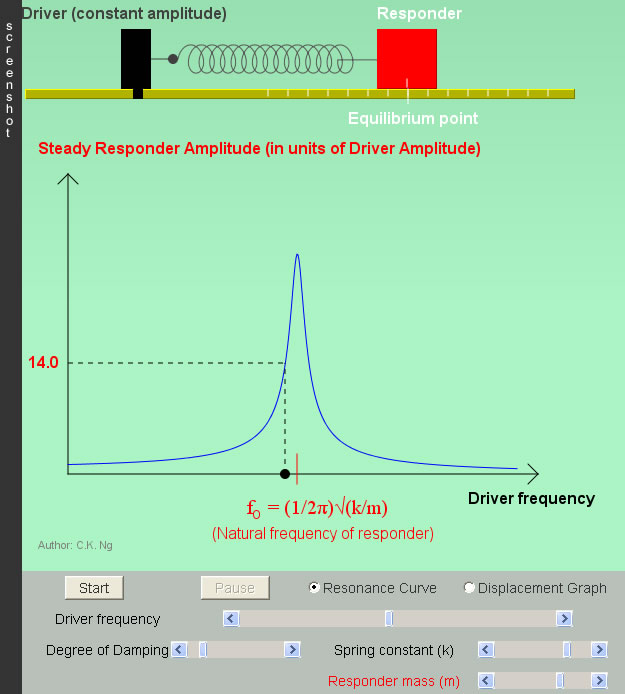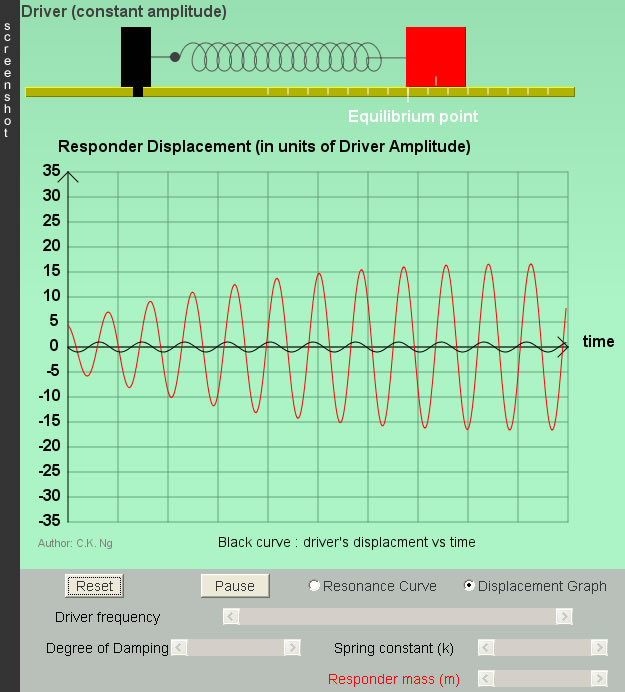

Mechanical Resonance
|
Run outside of the browser by pressing 'Enter' or double-clicking the Jar file |
|
|
|
Natural frequency (or called Characteristic Frequency) |
|
That is the frequency at which a system would oscillate by itself if displaced. The natural frequency of a spring-mass system is fo= √(k/m)/2π, where k is the spring constant and m is the mass of the object attached to the spring. |
|
Forced oscillation |
|
A periodic force at a given frequency (called driving frequency fd) is applied to an oscillating system of natural frequency fo. At the beginning (transient stage), there is a mixture of two kinds of oscillations, one has the frequency fo and the other has fd. The former will gradually die out because of the damping effect. Eventually (at the steady state) the system settles down with oscillation at the frequency of the driving force (fd). |

At the transient stage, the object responds to two oscillations (fo and fd), the superposition of them forms a BEAT. |
|
Resonance |
|
When the driving frequency is at the same frequency as the natural frequency of the oscillator, the amplitude of oscillation is at its greatest. When this happens the energy of the oscillator becomes a maximum. |
|
Phase |
|
When fd << fo, the responder is in-phase with the driver. |
|
|
